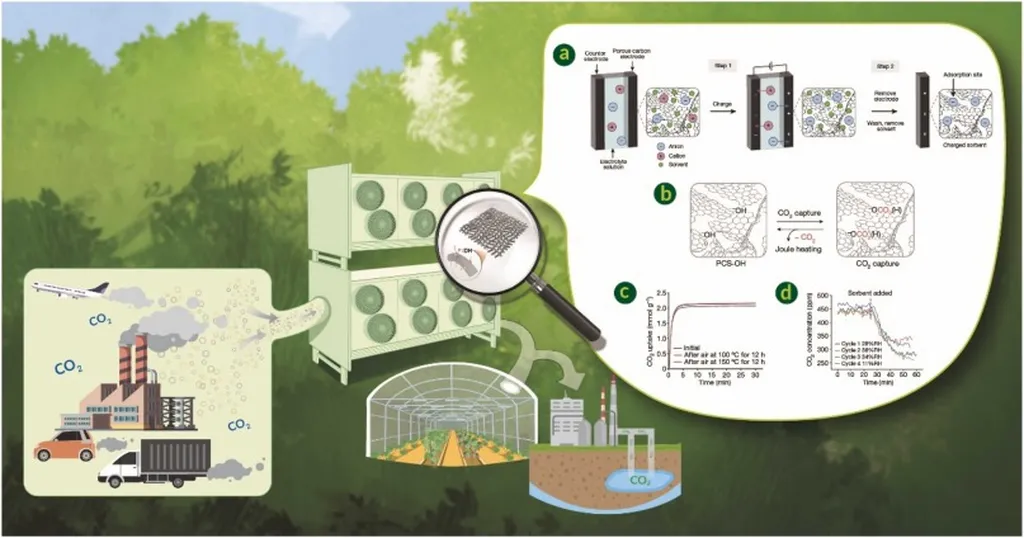In the quest to mitigate climate change, direct air capture (DAC) of carbon dioxide (CO2) has emerged as a promising technology, and researchers from Beijing Forestry University have just unveiled a groundbreaking development that could significantly enhance its efficiency and stability. Led by Meng Zhao from the College of Environmental Science and Engineering, the team has engineered a novel adsorbent material that could revolutionize the energy sector’s approach to atmospheric CO2 removal.
The innovative design focuses on a hydroxyl-rich Mg0.55Al layered double hydroxide (LDH) support, developed through an aqueous miscible organic solvent treatment. This method bypasses the traditional energy-intensive calcination process, making it more cost-effective and environmentally friendly. The team then loaded polyethyleneimine (PEI) onto this support, creating an optimized adsorbent that demonstrates exceptional performance.
“Our optimized 60 wt.% PEI modified Mg0.55Al-CO3 AMO-LDH achieves a CO2 uptake of 3.92 mmol g−1 under simulated wet air at 25°C,” Zhao explained. “Moreover, it retains 90.8% of its capacity over 20 cycles, showcasing remarkable stability.”
The key to this performance lies in the abundant surface hydroxyls of the uncalcined LDH, which form hydrogen bonds with PEI, suppressing oxidative degradation. This was validated through 1H Nuclear Magnetic Resonance and in situ X-ray Photoelectron Spectroscopy. After 3 hours at 120°C in simulated air, the PEI-LDH retained a CO2 capacity of 1.06 mmol g−1, significantly outperforming conventional silica-based adsorbents.
The research, published in the English-language journal “Advanced Science,” also reveals that hydroxyl-mediated amine anchoring minimizes water co-adsorption, further enhancing the material’s efficiency. This dual strategy of hydroxyl preservation and mesopore engineering could pave the way for designing cost-effective DAC adsorbents that achieve both high capacity and exceptional stability under realistic operating conditions.
The implications for the energy sector are substantial. As the world seeks to transition to a low-carbon economy, technologies like DAC will play a crucial role in removing CO2 from the atmosphere. The development of more efficient and stable adsorbent materials could make DAC more viable on a large scale, contributing to global efforts to combat climate change.
“This work establishes a dual strategy of hydroxyl preservation and mesopore engineering to design cost-effective DAC adsorbents,” Zhao noted. “Achieving both high capacity and exceptional stability under realistic operating conditions is a significant step forward.”
As the energy sector continues to evolve, innovations like this one will be vital in shaping the future of carbon capture technologies. The research from Beijing Forestry University not only advances our understanding of DAC but also brings us closer to a more sustainable and cleaner energy future.

